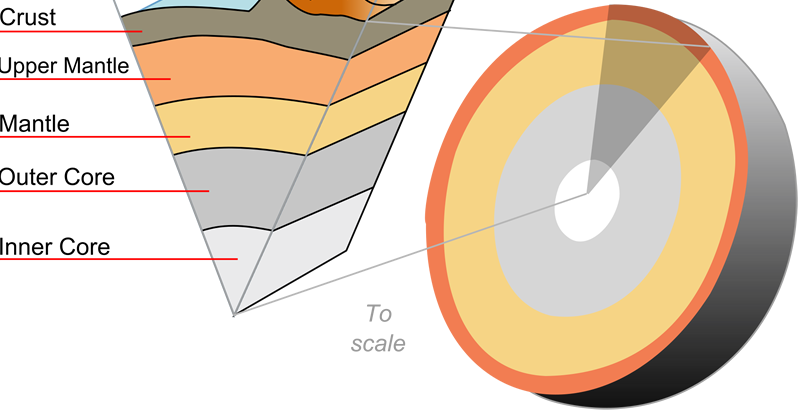The Earth's Surface
Please navigate the information below to learn about the structures of the Earth.

Photo Attribution
Description: Earth and atmosphere cutaway illustration
Source: Wikimedia Commons
Please click the menu item under Lessons at the top titled, Continental Drift to learn about the Continental Drift and Plate Tectonics.

